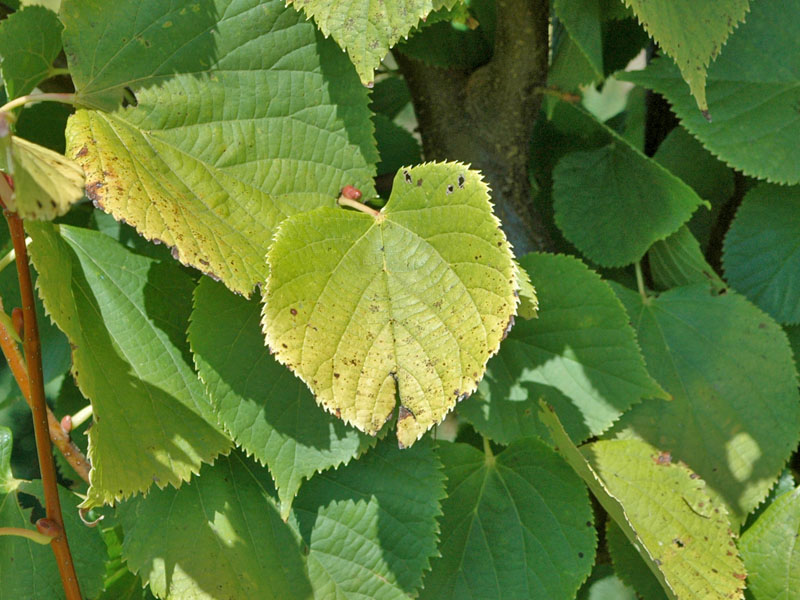| General Description | A good landscape tree with yellow and green colour, very nice pyrimidel shape. For this tree to grow to its potential it needs full sun. |
| ID Characteristic | Great shape, colour, and in its natural habitat has a strong sent. |
| Shape | Very nice pyrimidal shape. |
| Propagation | Occurs naturally in forests where both parent plant species are native. It is a hybrid between Tilia cordata and Tilia platyphyllos. |
| Cultivation | Full sun, average moisture to dry conditions. |
| Pests | This tree carries heavy aphid population which then turns to honeydew deposits and everything. |
| Bark/Stem Description | Smooth bark, not very distinctive. |
| Flower/Leaf Bud Description | A medium sized bud, red in colour. |
| Leaf Description | 5 - 10 cm in length as well as 5 - 10 cm in width. Green leaf changing to a rusty yellow in autumn. Alternate, simple, broad-ovate, sharply serrate. |
| Flower Description | Green and yellow flowers with 5 sepals and 5 petals on each bloom. |
| Fruit Description | A dry nut, 8mm in diameter, with a slight rib. |
| Colour Description | Brown/gray bark with green leaves turning to a rusty yellow with a white flower bud. |
| Texture Description | Smooth textured bark and leaves. |
